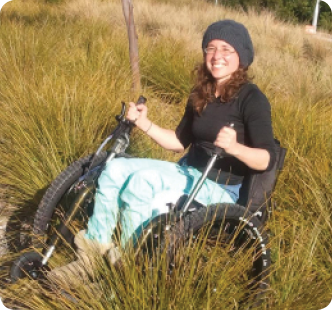{{{description}}}



MaterialsFootwear materials determine the weight. The lighter the footwear, the less energy it takes per step. Unfortunately, lightweight materials tend to wear out quickly, so there’s a trade-off between more durable and heavier materials that last longer and lighter materials with a shorter life.
Shoe uppers are typically made from leather, mesh or synthetic material. When well looked after, leather is the most durable, but it's the heaviest and most expensive. Synthetic materials are also strong, and lighter, but not as breathable as mesh, which is the lightest, but least durable upper.
Rubber soles are common. Additives such as carbon are sometimes used to increase the hardness of the sole, such as in mountaineering boots. In general, the harder and sturdier the sole, the more expensive the boot is, and the longer it will last.
Modern laces are made from synthetic fibres such as nylon, textured polyester, spun polyester and polypropylene, which are inexpensive and lightweight. Synthetic laces tend to be more slippery and hence more likely to come undone than traditional materials such as hemp, jute and cotton.
Waterproof boots are only waterproof until the walker steps in a creek, river, or puddle higher than the height of the boot. In such cases the boot fills with water, becomes heavy and uncomfortable. When crossing rivers it's advantageous to have footwear that allows water to easily enter and leave. However, in cold and wet environments such as alpine regions, such footwear fails to keep feet warm. In these conditions, waterproof boots are preferable to running shoes. When
walking in wet conditions for a long time, perhaps several hours, no bushwalking footwear is waterproof.
Leather is naturally water-resistant. If kept in good condition and treated well to avoid cracks and drying out, leather can be effective for a long time. Wax maximises waterproofness. Treatments for Nubuck and suede are available, with different re-proofing products required. Fabric boots may be made more water resistant by regularly applying the correct product, although due to mud and dirt getting into the material they tend to degrade faster than leather boots.
Sandshoes, Vollies or Vibram shoes are non-waterproof, and tend to wear out more quickly than heavier leather or fabric boots. On walks with multiple river crossings in close proximity, lighter footwear is best. A light shoe or sandal may be useful if there are many river crossings and you want to keep the main footwear dry.
Leather hiking bootsHiking boots are common in Europe and North America, where many tracks climb exposed mountain ranges with extreme weather conditions. Australia has fewer tracks that require hiking boots. A common reason to select "high-top“ or high-ankle boots is to provide ankle support, however, there is little to no scientific evidence to support this. In fact, people who wear footwear with a low-cut ankle not only show no difference in ankle injury, but also have footwear that's lighter, more comfortable and costs less. It’s also hard to feel the terrain underfoot while wearing thick heavy boots, making it harder to judge what’s slippery or uneven, arguably leaving the walker more prone to injury than a walker wearing a lightweight pair of sports shoes. So although the ankle support reason for wearing boots appears to be a myth, boots have merits that should be considered.
Footwear
Helen Smith

“The lighter the footwear, the less energy it takes per step.
BWA June 2016 | 47

Vibram FiveFingersPiranha13
A thick, rigid sole provides foot support, thicker materials keep feet warm and dry in cold and wet conditions, and boots are more durable than other footwear. The downside of boots is that they are heavy, they don't breathe as well as lighter footwear, breaking in is necessary, they cost more ($250-450), and some people find boots uncomfortable.
Synthetic bootsSynthetic boots have much the same advantages and disadvantages as leather boots but are generally a little lighter and more comfortable.
Low-cut walking boots, sports shoesThese are half-way between a hiking boot and a running shoe. Low-cut walking boots are generally made with the same material as synthetic boots, the sole is thicker and more rigid than a sports shoe, and the ankle is still cut low. Sports shoes generally have very low ankle support and are made from thin materials. Because of the rubber sole, Dunlop Vollies are very good for creek walking and canyoning, but have a shorter life than was formerly the case.
Being lighter they're comfortable and at $50-200 are much more affordable than boots. However, you may need 10 pairs to last
as long as a pair of boots. Disadvantages include the short life. and the low-cut ankles allows detritus to build up inside, even with gaiters.
Barefoot-style shoesThere's debate whether minimalist shoes such as the barefoot Vibram five finger running shoes lead to less injury than running with traditional running shoes, and more research needs to be done to determine if there are disadvantages to using minimalist shoes. However, research on the biomechanics of foot impact while running suggests that landing on the fore-foot has less impact than landing on the heel and this style of running is encouraged by barefoot style shoes. Traditional running shoes promote heel landing. While, some bushwalkers like using Vibram five finger running shoes, others find them extremely uncomfortable. If considering using them on a bushwalk, try them out thoroughly around home first before committing to them on a bushwalk.
They are lightweight and quick drying. The negatives are that they are easily ripped, don’t keep feet warm, and require regular cleaning to stop them from smelling bad.
“... landing on the fore-foot has less impact than landing on the heel ...
“Sports shoes generally have very low ankle support ...
48 | BWA June 2016
Leather boots need breaking in, particularly near the front of the boot, the sides and the heel. Keep this in mind when fitting leather.
Custom fittingEveryone’s feet are slightly differently shaped, and it can be challenging finding footwear to work for some types of feet. There are a few tricks that can help improve fits for some common foot types.
Narrow foot: Use a thicker insole or try a different lacing technique.
Narrow heel: Try woman’s footwear as they tend to have a slightly narrower heel
Wide foot: Try a men’s footwear as they tend to be wider. Alternatively, change the lacing technique to remove pressure on the front of the footwear.
High instep: Put in additional arch support on the insole.
Repairs and adjustmentBasic repairs and adjustments may give an old pair of boots or shoes a new lease of life. As long as the soles are not too worn and the upper material is still in good condition, it’s worth tweaking a few things to make footwear last longer.
Laces stretch and wear out over time; new laces have better grip and may hold the foot more strongly in place. Insoles wear thin and degrade over time; a new thicker insole improves support by providing a tighter fit. An extra insole should lock the foot tightly, and may stop the heel from slipping. Note that the fit should be snug, not tight. Socks wear out over time, so replace when they are worn.
EthicsIt’s easy to consider bushwalking as a low-impact pastime, especially when following Leave No Trace principles, but in an increasingly global economy, it’s common for bushwalking gear to be produced in other countries. Bushwalking gear often travels half-way around the world before it's sold. Hence, the environmental and social impacts
of where and how gear is produced must be included when calculating the true impact of a pastime such as bushwalking.
In the last 20 years, more and more major footwear and clothing companies have been accused of exploiting workers in third world countries, typically unfair pay and working conditions. Companies have also used materials damage human health and the environment.
The Ethical Company Organisation evaluated the performance of top players in footwear production on human rights, environmental and animal rights. They found that Po-Zu, Cheatah and Birkenstock performed the best, and Reebok, Shelleys, Umbro were the least ethical shoe making companies.
Although campaigning has forced major companies to re-evaluate working conditions, there is still much room for improvement. Take a moment to consider a company's ethics before buying footwear, or indeed any other product, from them.
Helen Smith is a passionate conservationist and someone who is constantly planning her next escape into the bush. In early 2015 she completed her PhD at The University of Sydney studying the impacts of exotic and native rodents in Australia and New Zealand. Now she’s working at the National Parks Association NSW developing information to help bushwalkers build their confidence and bushcraft skills.


“ ... it can be challenging finding footwear to work for some types of feet
50 | BWA June 2016